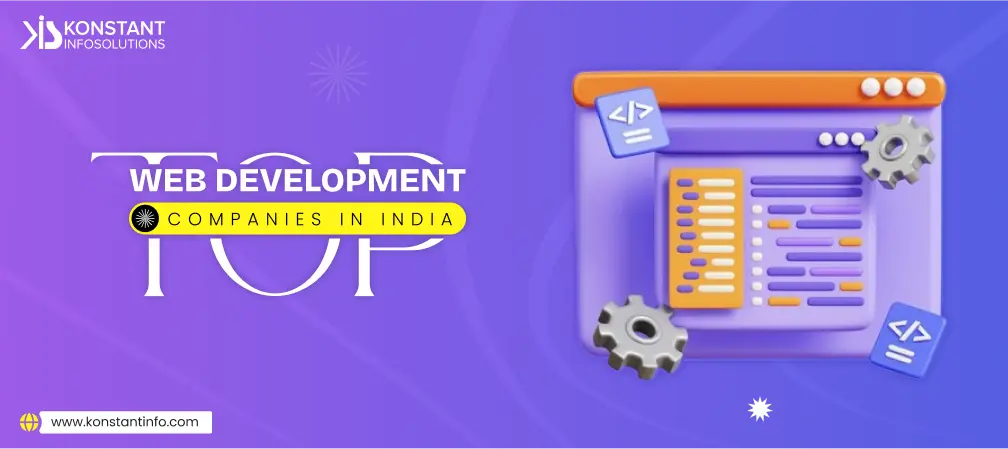
Web application frameworks are popularly known as server-side frameworks and are easier to code, maintain and extremely helpful in scaling web applications. They come along with tools and libraries to simplify web development tasks. They make it easy to route URLs to appropriate handlers, make the application front end interact with the backend databases, support sessions and user authentication, format output (e.g. HTML, XML, JSON) and improve application security against web attacks.
See also:
Web application frameworks came into being to reduce the need to hand-code and improve the overall performance of the apps, as these simplify the development process. They support multiple databases, provide static and dynamic templates, and manage system users, assists administrators to assign roles, add/modify/delete users, map URL’s, are quick to code, are less prone to errors, easily gels up with the code, and also fulfils the need to converge multiple frameworks. We have web frameworks to
You need a framework if:
Frameworks do not resolve every problem with web apps. You do not need a framework if:
We need tools, libraries, and frameworks to create a web app. With a CMS we do not need to have any prior coding experience. Another way around, we need to know how to make correct use of a framework to create a custom web app.
| Points of Difference | CMS | Web App Framework |
|---|---|---|
| How do they work? | Using a CMS works like an explorer where you get some pre-set features, an already styled theme for your website where you may add new features by installing the plugins. | Using a Web App Framework works as navigating the system through a command line (framework) |
| Does it allow customizations? | No, they have limited functionality | Web frameworks allow customizations |
| Does it require pre-work? | Programming skills are not required to make use of CMS if you are maintaining an existing website. To set up a web app through a CMS, you need to know how it will work, edit and read code from the server. | Frameworks are a set of libraries and tools that help in building web apps. You need to know a higher-level programming language to assemble frameworks in your application. |
| Frameworks Used (were popular until 2019) | Joomla, Drupal and WordPress etc. | Spring Boot, Express, Ruby on Rails, Laravel Lumen, Flask, Django and Microdot etc. |
It becomes evident with the advancement in the web-standards that the web app frameworks ensure smarter communication between the user and the web application. They can react to the user input thus making the app more responsive, easily navigable on any device.
Web Frameworks can be classified as:
(1) Client-Side – work at Frontend
(2) Server-Side – work at Backend
What are the functions of web frameworks?
Server Side Web App Frameworks: These take care of the backend business logic. To work on the server side and set up app logic on the server (backend). These are constructed in a way to enable creating simple pages, forms and landings of different kinds. These are capable of handling HTTP requests, managing databases, mapping URL’s, improving security, simplifying the development process by forming the output data. Examples of server-side frameworks include:
Client-Side Web App Frameworks: These do not take care of the business logic but work upfront inside the browser. So new interfaces can be implemented. To work on the client-side (front-end) and manage the user interface of the application. Client-Side Frameworks allow creating many animated features with the help of single-page applications. Every client-side framework varies in functionality and use, and most of them use JavaScript as their programming language. Examples of Client-Side Frameworks include: Angular JS, Ember JS, and React JS etc.
Few specific and most used server-side frameworks and full-stack frameworks (comprising both server and client-side frameworks) include:
| Web Frameworks | Applications |
|---|---|
| Django (Python)
| Disqus, Instagram, Knight Foundation, MacArthur Foundation, Mozilla, National Geographic, Open Knowledge Foundation, Pinterest, Open Stack |
| Flask (Python) | Raspberry Pi, Drone Controllers |
| Express (Node.JS, JavaScript) | Uber, Accenture, IBM |
| Ruby on Rails (Ruby) | Basecamp, GitHub, Shopify, Airbnb, Twitch, SoundCloud, Hulu, Zendesk, Square, Highrise |
| ASP.Net | Microsoft, Xbox.com, Stack Overflow |
| Spring Boot (Java) | GPS based apps |
(Please Note: This list is not comprehensive)
Web Frameworks provide tools and libraries to simplify common problems that developers face during web development operations.
Web Frameworks help in simplifying the development by generating server-side code to work with requests and responses. Therefore, interacting with higher-level code becomes easier than with lower-level networking primitives.
Web Frameworks are easily able to handle different resources provided by different sites that are accessible through distinct URL’s. Web Frameworks map URL patterns to specific handler functions. This method eases the website maintenance as the URL used to deliver the code can be changed without the need to change the underlying code. Each framework handles the mapping in their way.
Data can be encoded in an HTTP request in various ways. The data required in URL parameters or URL structure can be encoded in an HTTP get request. HTTP post request can update the resource on the server and include “Post data” within the body of the request. These may often include the session information or user in a client-side cookie. Web Frameworks provide just the right amount of information and help to streamline this information.
Web Frameworks provide a data layer to help websites in abstracting the data read, write, query, and delete operations. Such an abstraction layer is referred to as an Object-Relational Mapper (ORM). This serves in two ways – to replace the underlying database without changing the code and basic validation of data which helps check the correct sequencing of data.
Web Frameworks come along with templating systems which allow specifying the structure of an output document, making use of placeholders for data that are added when a page is generated and restored. Web Framework templates provide a mechanism to generate other document formats from stored data including JSON and HTML.
Almost every higher-level programming language contains frameworks to ease off the web development process. Selecting an appropriate web development framework depends upon:
As soon as we type a URL in a web browser and press the ‘Enter’ key, the Server and Browser connect via TCP and HTTPS, we need to follow these seven steps (browser to server to browser requests)
Developers must consider certain specific criteria before selecting web app development frameworks: (1) A framework that does not make use of stringent naming conventions helps in avoiding run-time errors. (2) Backend frameworks should have libraries to assist developers in doing repetitive tasks and are helpful in code reuse. (3) They must be robust enough to track bugs, apply patches and notify users. A dynamic framework is more secure and is less prone to hackers. (4) It must come with good documentation. (5) It must be checked whether the application can be hosted on a dedicated or shared server.
Considering all the advantages that web development frameworks bring to web development like Security, URL Mapping, Ease of Creating an Extension and Availability, Bug Fixes/ Updates, large Community, vast documentation, scalability, unit testing support, includes JS Library, DB Abstraction and ORM, core library (AJAX, Authentication, Authorization, Caching, Data Sanitization, Data Validation, Templating, URL mapping or rewriting), swift learning curve, ease of installation, hosting requirements, software pattern, license and save Cost-Time-Effort, Have large community support and documentation, we still cannot ignore the fact that web frameworks are not be all end all when it comes to web development. They speed up the development process, simplify coding, and help create highly responsive and engaging web applications.
Do let us know in case of questions or if you have nice things to say or criticisms; connect with us for the best web application development!



Manish Jain is the co-founder and Managing Director at Konstant Infosolutions. He is responsible for the overall operations of the company and has played a major role in bringing Konstant up from its humble beginnings and, with his immense energy and drive, transforming it into a globally trusted name in IT solutions.
Or send us an email at: [email protected]